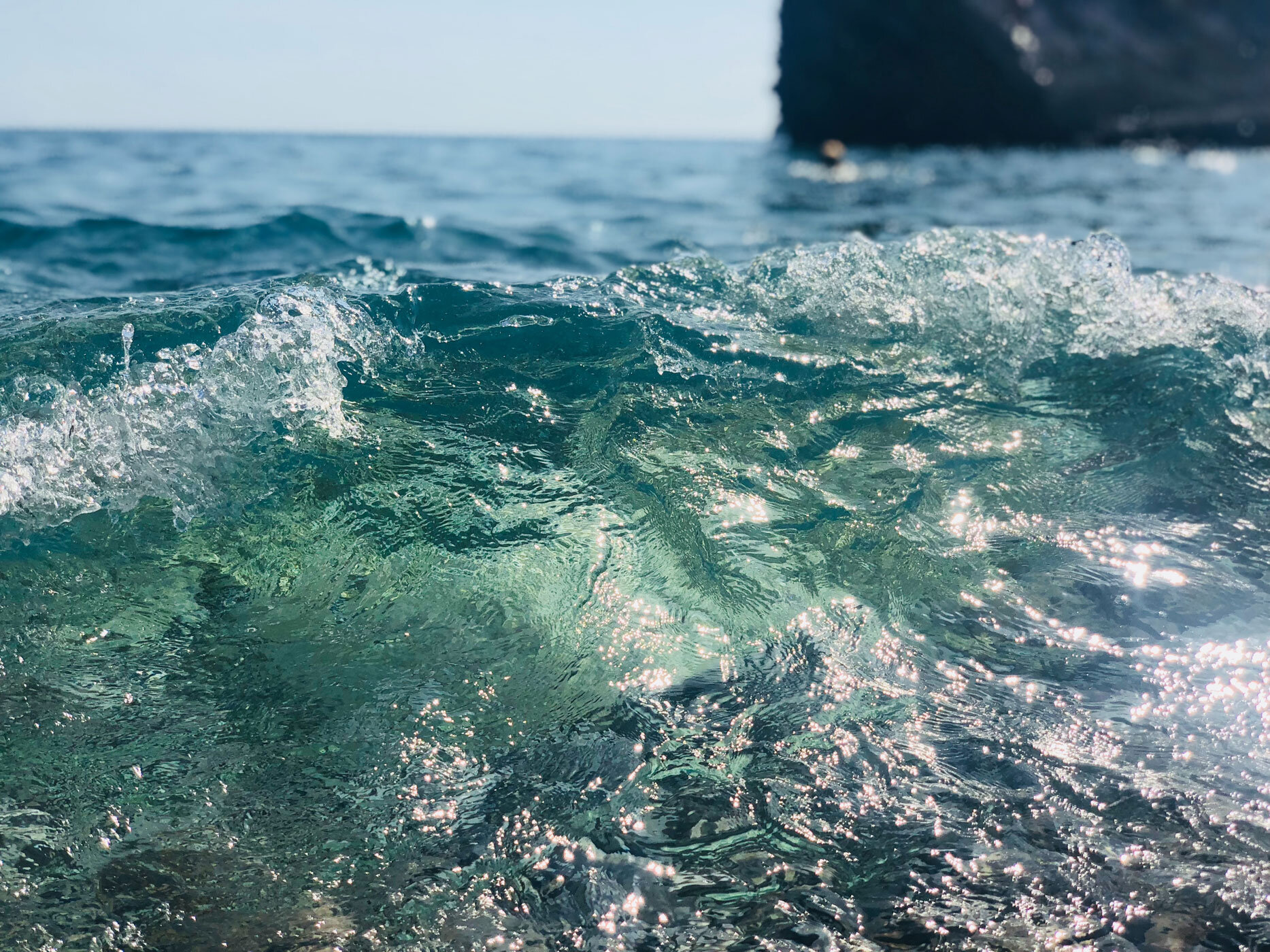Salt! Gift of the Waves

by Torrey Douglass
With over 90 miles of coastline, Mendocino County is lucky to have the Pacific Ocean along its western edge, leaning its rocky shoulder against the bulk of blue (or grey, or green, depending on the prevailing weather conditions). It’s an ever-changing behemoth we can gaze at, dip in, sail on, and feed from. When considering how the ocean factors into your menu, your mind probably lands first on all the sea creatures we love to eat—Salmon, Rock Cod, Lingcod, Albacore, and Pacific Halibut, to name a few. But there is another food we can forage from our rocky shores, an elemental one: SALT.
Foraging always requires a little effort, and it might be tempting to ask, “Why bother? Salt is just salt, right?” If only. Processed table salt is kept dry and pourable due to anti-caking agents, which can contain aluminium (pro-tip: don’t eat aluminium!). Its manufacturing process also destroys the naturally occurring alkaline minerals our bodies need, including iodine, so a synthetic iodine is added back in. (Flashback fact: synthetic iodine was added to table salt in the 1920s to reduce goiters occurring in the Midwest as a result of mineral-deficient foods caused by depleted soil.) Both the aluminium and the synthetic iodine are known hormone disruptors, and the bleach used to turn naturally grey salt bright white is not recommended for consumption, either. OH MY GOSH, ALL THE BAD NEWS! Let’s go get some sea salt.
There are two methods for gathering salt—you can pick up the naturally evaporated deposits left along the rocks, or you can collect salt water and bring it home to make the salt yourself. For the first approach, you need to be comfortable with some bonus items in your salt—sand, driftwood specks, possibly even seagull poop, you get it. Walk along the rocks and look for crystalized salt on the edges of tidepools or along the high tide mark on flat rocky outcroppings. With a thin metal spatula, delicately break away the deposits and lift the pieces into your container. At home you can spread the salt onto a cookie sheet and pick out whatever hitchhikers made their way into your harvest, then store in a cool, dry spot.
The second method takes more time but it’s easier to avoid contaminants. Find a pollution-free location to collect sea water (think cove, not harbor). Bring a clean, lidded container to fill. Once you’re back in your kitchen, pour the water through a sieve into a large pot, bring to a boil, and then reduce to a simmer until there is an inch of cloudy water left in the bottom. Next, pour this mixture into a large shallow pan or cookie sheet with a lip, cover with cheese cloth or a fine screen, and leave it in the sun until completely dry. At this point, you can use the salt in its natural flake form or put it into a food processor to grind into a finer grain. Consider adding herbs like rosemary, dried garlic, dill, and/or oregano to make your own salt blend. Your imagination can roam as wild and wide as the ocean itself.
Photo by Aylin Coban courtesy of Unsplash.
